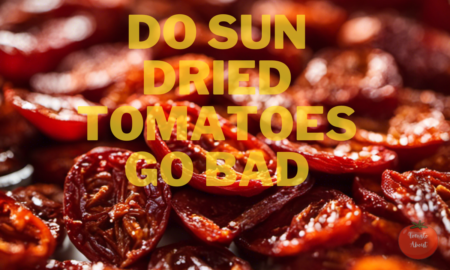As a gardener, there’s nothing more frustrating than watching your tomato plants bloom beautifully, only to have the flowers drop off without producing any fruit. Or worse, you end up with misshapen or underdeveloped tomatoes that never reach their full potential. This issue, commonly known as blossom drop or poor fruit set, can be caused by various factors such as extreme temperatures, humidity levels, or lack of pollinators (hinder this natural process, leading to poor fruit set or blossom drop).
While nature usually takes care of the pollination process through bees, butterflies, and other insects, sometimes a little human intervention is necessary. That’s where hand pollination comes in – a simple yet effective technique that can ensure your tomato plants produce a bountiful harvest. So, with just a few minutes of extra effort a week, if conditions are less than ideal, you can be sure of an abundant, fruitful crop!
Understand Blossom Basics
Tomatoes are self-pollinating plants that have the perfect flowers for the task. That is, each flower contains both the male and female reproductive organs (i.e., the stamen and stigma). This makes pollination easy because each blossom releases pollen from the stamen to land on its own stigma, and once fertilized, the fruit develops.
Typically, tomato fertilization is achieved through buzz or wind pollination. However numerous studies have determined that buzz pollination is the most effective in terms of fruit size, yield quantities, and increased seed count. Buzz pollination occurs when certain insects, ones with the right vibes such as bumblebees (Bombus spp.) and carpenter bees (Xylocopa spp.), vibrate their bodies to shake pollen from the anthers, or the parts of the stamens that hold the pollen.
Wind pollination occurs when a breeze shakes the blossoms to release pollen. However, in the world of pollen grains, Solanum pollen is sticky and heavy, so it takes a good breeze to release the grains from the anthers.
Pollen shed normally occurs from morning to late afternoon, with midday being the ideal time for release and transfer. Sunny, warm weather and low humidity produce optimal conditions for pollination, but doing it by hand means you don’t have to wait for perfect conditions. Some pollen transfer still occurs in less-than-ideal weather.
When to Hand Pollinate Tomatoes?
Before we dive into the techniques, let’s understand when hand-pollinating becomes necessary. While tomatoes are self-pollinating plants, meaning they can pollinate themselves, there are certain situations where a little assistance can go a long way:
- Lack of Pollinators: If you’re growing tomatoes in a greenhouse or an area with few pollinating insects, the flowers may struggle to receive adequate pollination.
- Extreme Weather Conditions: High temperatures or humidity can affect the stickiness of the pollen, making it harder for it to transfer effectively. Similarly, excessive rain or wind can wash away or disperse the pollen, hindering the pollination process.
- Tomato Variety: Some tomato varieties, especially older heirloom types, are known to benefit from hand pollination, as they may have larger, stickier pollen grains that don’t transfer as easily.
- Early or Late in the Season: At the beginning and end of the growing season, when pollinator activity is lower, hand pollination can give your tomato plants an extra boost.
How to Pollinate Tomatoes By Hand?
Now that you understand the importance of hand-pollinating, let’s explore some effective techniques to ensure successful pollination:
1. The Gentle Shake
Sometimes, the simplest solutions are the most effective. If you’re growing your tomatoes outdoors and there’s a lack of wind to facilitate pollination, you can mimic that motion by gently shaking the stems or tapping on the ends of the flowers directly.
Grab the stem close to the base of the flower and give it a gentle shake or tap. If no pollen is released, you can try a bit more force by flicking the stem. A quick few seconds of vibration is often enough to drop any loose pollen around the flower, helping to ensure pollination takes place.
2. Using an Art Brush
A small, soft-bristled art brush is an effective tool for hand pollination, as it can mimic the movement of nectar-gathering insects. The brush should have natural bristles, as pollen clings better to natural fibers than to plastic ones.
To use this method, gently lift up the flower and rub or twirl the brush back and forth, around the inside of the petals, along the pistil, and over the tip of the stigma. This action will collect and transfer pollen grains from the anthers to the stigma. Be sure to use a different brush for each tomato variety to avoid cross-pollination, or clean your brush with isopropyl alcohol before moving to another variety.
3. Using Cotton Swabs
Cotton swabs, or Q-tips, are another excellent tool for hand pollination due to their finely spun cotton surface, which is ideal for collecting and distributing pollen. Use a swab in the same manner as you would an art brush, gently swirling or dabbing it inside the flower to collect pollen from the anthers and then transferring it to the stigma.
Alternatively, you can collect the pollen in a small dish and use a clean swab or brush to gently apply the pollen directly to the tip of each flower’s stigma.
4. Using a Battery-Operated Toothbrush
The easiest, fastest, and most effective method for hand-pollinating tomatoes is to use a battery-operated toothbrush. While commercial electric vibrators are available, a child’s toothbrush can do the job for the home gardener at a fraction of the cost.
The vibrating head of the toothbrush mimics the action of buzz pollination, causing the anthers to release their pollen onto the stigma. Simply place the vibrating toothbrush head on the flower base or stem, and buzz for a second or two before moving on to the next blossom. This method is particularly effective in facilitating pollen transfer and ensuring successful pollination.
What is the Best Time for Hand Pollination?
Timing is everything when it comes to hand-pollinating your tomato plants. The ideal window is around midday when the pollen production is at its peak after the morning warmth.
Low humidity and warm temperatures are preferred to make the process quicker and more successful. However, even if conditions aren’t perfect, hand-pollinating can still provide a much-needed boost to your tomato plants.
How Often Should I Hand Pollinate?
If possible, hand pollinate every three or four days in the heat of the midday sun. Target every open blossom and repeat every couple of days until the plants stop flowering to ensure every blossom on the cluster is fertilized. Watch for fruits to begin forming after the flowers wilt.
The Rewards of Hand Pollination
While hand-pollinating may seem like an extra step in your gardening routine, the rewards are well worth the effort. By taking control of the pollination process, you can ensure your tomato plants receive the attention they need, resulting in a bountiful harvest of delicious, vine-ripened fruits.
Imagine the satisfaction of biting into a juicy, homegrown tomato, knowing that your own hands played a role in its creation. It’s a rewarding feeling that only a dedicated gardener can truly appreciate.
So, don’t be discouraged by the occasional setback or lack of pollinators. Embrace the art of hand pollination, and watch as your tomato plants flourish under your nurturing care.
The Bottomline
Hand-pollinating tomatoes is a simple task that pays off in a big way. Even if you don’t face pollination issues, it ensures you get the most tomatoes possible from your plants. While not always necessary, taking a few minutes each week to gently shake, brush, or vibrate the flowers can lead to a much larger harvest.
If you want plump, juicy tomatoes overflowing from your garden, give hand-pollination a try. The little bit of extra effort is worth it for an abundant crop of homegrown goodness.


